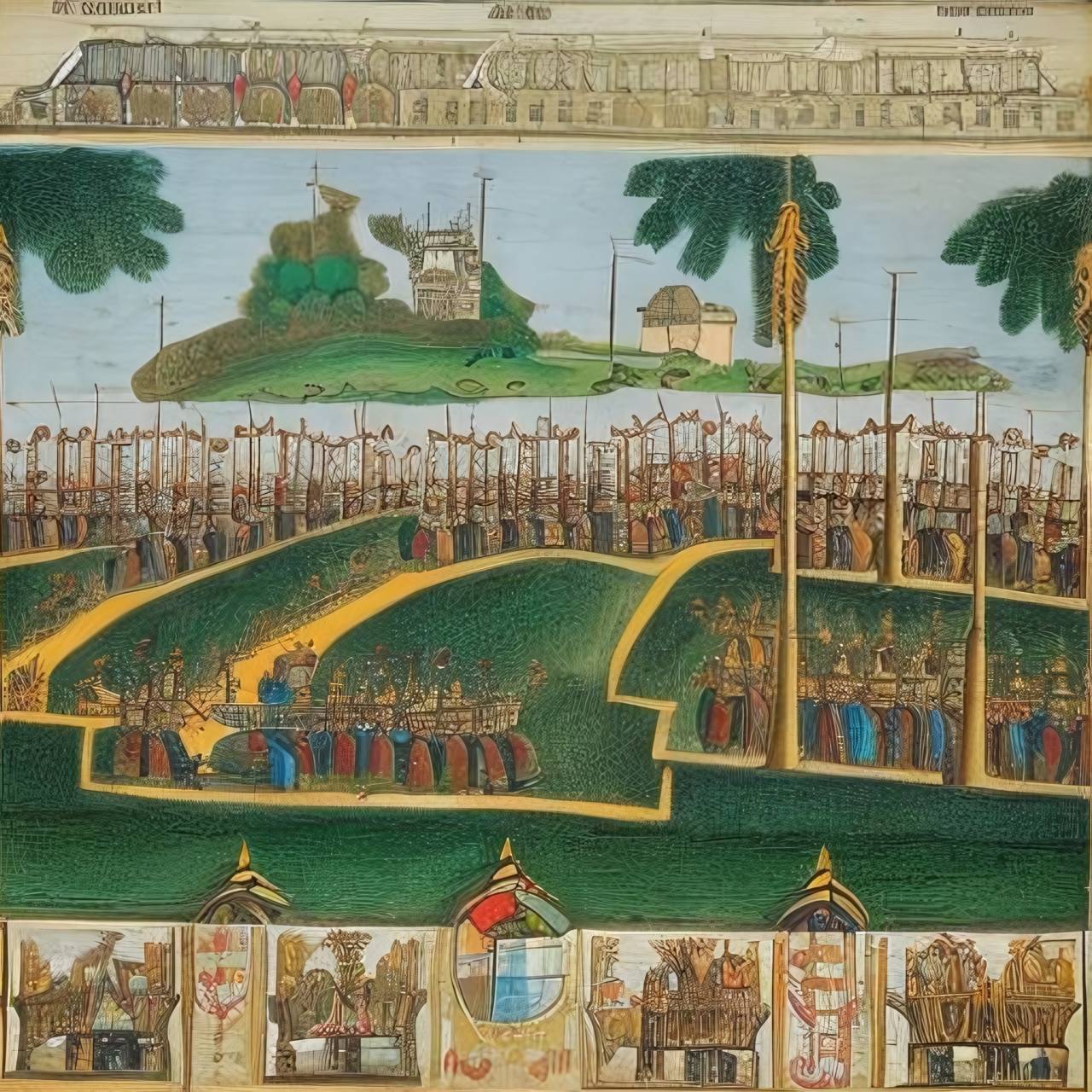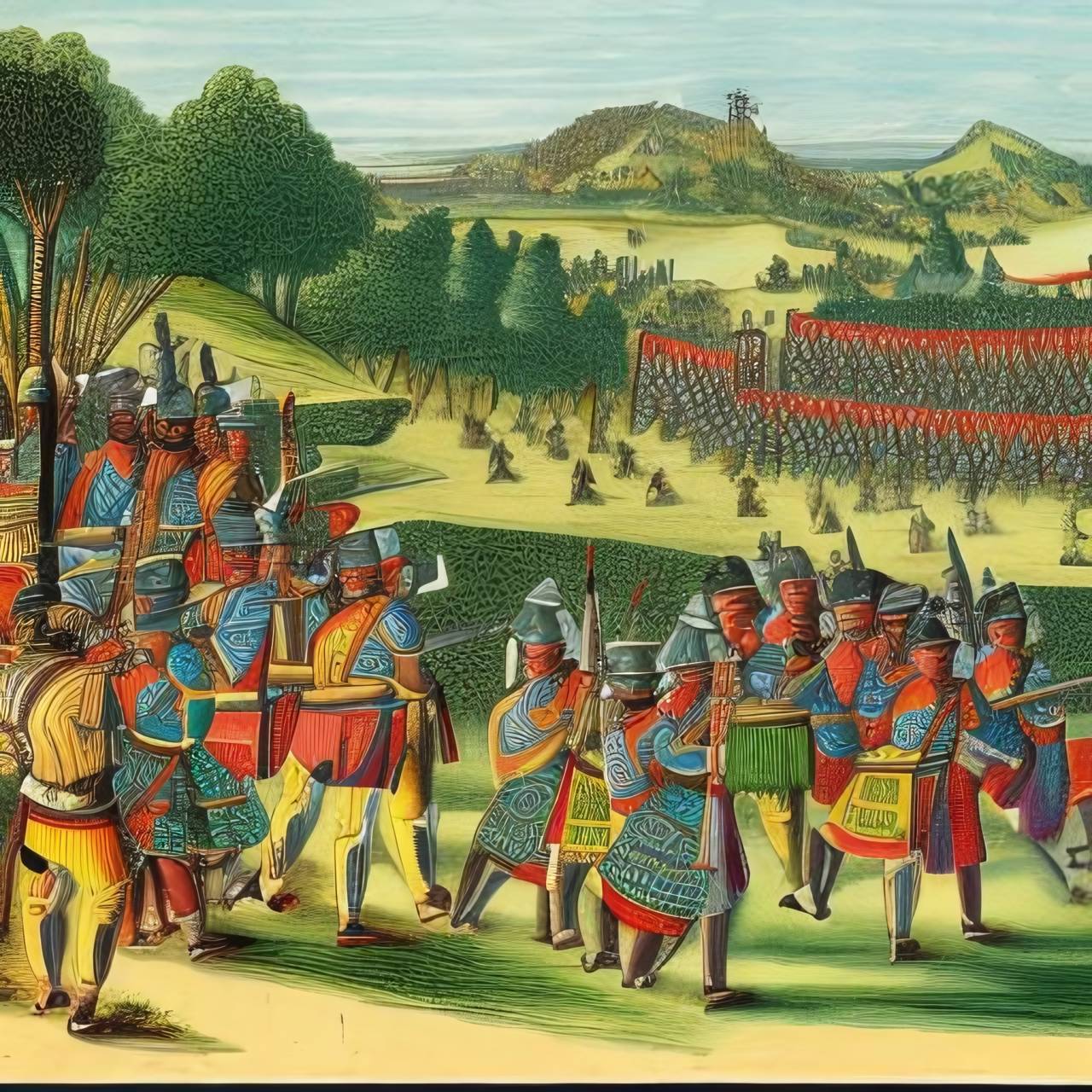In the annals of Mughal history, the Siege of Bijapur stands as a pivotal event, marking the climax of the empire’s military campaigns in the Deccan. This epic clash, which took place in 1686, pitted the mighty Mughal forces against the resilient Sultanate of Bijapur, leading to its ultimate downfall. Join me on a journey through history as we delve into the historical background, the unfolding of the siege, and its far-reaching aftermath.
Historical Background
The Sultanate of Bijapur, located in the Deccan plateau of South India, had a rich history and a reputation for formidable fortifications. Established in 1489 by Yusuf Adil Shah, Bijapur reached its zenith under the reign of Ibrahim Adil Shah II during the late 16th and early 17th centuries. However, by the late 17th century, the Mughal Empire, under the rule of Aurangzeb, aimed to expand its dominion and assert its authority over the Deccan.
The Siege Unfolds
In 1685, Aurangzeb’s armies, commanded by his trusted general, Dilawar Khan, marched towards Bijapur, intent on subjugating the Deccan Sultanate. The fortifications of Bijapur, including its renowned citadel, were a formidable challenge for the Mughals. The Sultan of Bijapur, Sikandar Adil Shah, rallied his forces, prepared for the inevitable confrontation.
The siege commenced in 1686, with Mughal forces encircling Bijapur, cutting off supplies and communication lines. The Mughals bombarded the fortifications, deploying their artillery and siege engines, while the Bijapur defenders fought valiantly to protect their land and honour. The siege turned into a protracted struggle, lasting several months, as the defenders exhibited unwavering resilience.
Aftermath
Despite the Sultanate of Bijapur’s spirited defence, the relentless Mughal onslaught eventually took its toll. The walls of Bijapur began to crumble under the weight of continuous bombardment. Sensing the imminent fall of their citadel, Sikandar Adil Shah and his loyal court decided to negotiate a surrender.
In September 1686, Bijapur officially capitulated to the Mughals. The once-mighty Sultanate was absorbed into the expanding Mughal Empire, marking the end of its independent rule. Bijapur’s rich cultural heritage, including its splendid architecture and artistic achievements, became assimilated into the broader Mughal tapestry.
The aftermath of the siege witnessed a transformation in the political landscape of the Deccan. The Mughals solidified their hold over the region, extending their dominion further south. However, the conquest of Bijapur did not come without challenges. The Mughals faced fierce resistance from other Deccan Sultanates, particularly Golconda, prolonging their military campaigns in the region for years to come.
The fall of Bijapur also had cultural ramifications. The blending of Mughal and Deccan artistic traditions resulted in a unique synthesis, giving birth to a new artistic style known as the “Mughal-Deccani.” This fusion encompassed architectural elements, miniature paintings, and the rich traditions of music and poetry.
Conclusion
The Siege of Bijapur stands as a testament to the ambition and military might of the Mughal Empire and the resilience of the Deccan Sultanates. This epic clash shaped the course of history in the Deccan, forever altering the balance of power in the region. The legacy of Bijapur lives on through its architectural marvels which continue to awe and inspire visitors to this day.
References
– Eaton, Richard M. The Rise of Islam and the Bengal Frontier, 1204-1760. University of California Press, 1993.
– Farooqui, Salma Ahmed. A Comprehensive History of Medieval India: From Twelfth to the Mid-Eighteenth Century. Pearson Education India, 2011.
– Kulke, Hermann, and Dietmar Rothermund. A History of India. Routledge, 2013.
– Michell, George. Architecture and Art of the Deccan Sultanates. Cambridge University Press, 1995.
– Chandra, Satish. Medieval India: From Sultanate to the Mughals Part – II. Har-Anand Publications, 2005.
Tags
Divi Meetup 2019, San Francisco
Related Articles
Unappreciated Greatness
Life and Legacy of Jahangir of the Mughal Empire. Jahangir ruled over one of the largest empires in human history during his lifetime, yet few people outside of South Asia have heard of him. I aim to shed light on the life and legacy of this remarkable figure,...
The Plague Doctor’s Diary
A Personal Account of the Turin Epidemic of 1656. I am writing this diary to record my experiences and observations as a plague doctor in Turin, the capital of the Duchy of Savoy, during the terrible epidemic that has afflicted this city and its surroundings since the...
The Timeless Beauty of Bustan
Unveiling the Secrets of Saadi Shirazi's Masterpiece.In the realm of Persian literature, few works have captured the essence of love, spirituality, and morality quite like Bustan (The Orchard) by Saadi Shirazi. This 13th-century masterpiece has left a lasting impact...
Stay Up to Date With The Latest News & Updates
Explore
Browse your topics of interest using our keyword list.
Join Our Newsletter
Sign-up to get an overview of our recent articles handpicked by our editors.
Follow Us
Follow our social media accounts to get instant notifications about our newly published articles.









